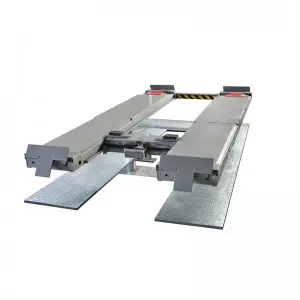Cylinders are ubiquitous in our everyday lives, often melding seamlessly into the background. From the engine that propels our vehicles forward to the simple cylindrical shape of a soda can, these compact structures play a vital role in various industries and applications. In this article, we delve into the world of cylinders, exploring their versatile functionality across diverse fields, from engineering and manufacturing to science and everyday objects.

Exploring the Versatility and Functionality of Cylinders: A Comprehensive Overview
At its core, a cylinder is a three-dimensional geometric shape characterized by two circular bases of equal radii that are parallel to each other. The sides of the cylinder, known as the lateral surface, connect the bases and form a curved surface. This robust design grants cylinders their strength and stability, rendering them ideal for numerous applications.
The automotive industry heavily relies on cylinders, particularly in engines. Internal combustion engines, used in most automobiles, power essential tasks and functions critical to transportation. Here, cylindrical-shaped pistons slide within cylinders, generating mechanical energy by combusting fuel. These cylinders, typically made of durable materials like aluminum or cast iron, facilitate the piston’s upward and downward motion, efficiently converting fuel into rotational motion.

Exploring the Versatility and Functionality of Cylinders: A Comprehensive Overview
While cylinders are instrumental in propelling our vehicles, they also find extensive use in manufacturing and engineering applications. In hydraulic systems, cylinders are employed in hydraulic actuators. These actuators convert hydraulic energy into linear motion, enabling heavy machinery and equipment to perform tasks smoothly and precisely. The combination of cylinders and hydraulic systems results in exceptional force multiplication, enabling the lifting of heavy loads with minimal effort.

Exploring the Versatility and Functionality of Cylinders: A Comprehensive Overview
Moreover, pneumatic cylinders rely on compressed air to create motion. Commonly used in automated industrial processes, they provide linear force and motion to various machinery, such as robotic arms or conveyor systems. By utilizing cylinders, manufacturers enhance the efficiency and productivity of their operations, automating tasks that were once labor-intensive and time-consuming.
Beyond the realms of mechanics and engineering, cylinders also play a vital role in scientific endeavors. In laboratories, gases are often stored and transported in steel or aluminum gas cylinders. These cylinders ensure the safe containment and controlled release of gases, facilitating various scientific experiments, medical procedures, and industrial processes. Additionally, cylinders are essential components of chromatography systems, facilitating the separation and analysis of complex mixtures of substances.
It’s worth noting that cylinders aren’t limited to industrial or scientific applications; they are present in our everyday lives, even in the simplest objects. For instance, cylindrical shapes can be found in household items such as cans, bottles, and even certain types of furniture. The convenience and functionality of these products owe their existence in part to the simplicity and efficiency of the cylinder shape, making them easy to stack, store, and transport.
In conclusion, the versatility and functionality of cylinders are undeniable. These compact yet powerful structures, whether found under the hood of our cars or in everyday objects, serve as the backbone of countless industries. From propelling vehicles and powering heavy machinery to facilitating scientific experiments and enhancing household products, cylinders continue to shape the world around us. Therefore, appreciating the impact and potential of cylindrical structures broadens our understanding and highlights the importance of these unassuming geometric marvels.New Engery Vehicle Battery Lift
